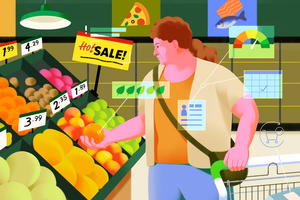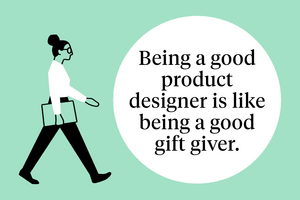How would you react if someone told you that your name can influence your everyday choices as well as life-shaping decisions? Would you smile at the idea that Craigs crave a Coke while Peters long for a Pepsi when they are thirsty? Would you say it is just mere coincidence that Lawrence became a lawyer and Judy a judge?
Most people indeed consider it ludicrous to think that their name could influence their choices, especially when dealing with major decisions such as selecting a career, a home, or even a partner. Archival data, however, clearly shows that men named Dennis are overrepresented among dentists, and women named Louise are disproportionately likely to move to Louisiana.
Intrigued by the complex relationship people seem to have with their names, Miguel Brendl (Professor of Marketing at the Kellogg School of Management) collaborated with Amitava Chattopadhyay (Professor of Marketing at INSEAD), Brett W. Pelham (Associate Professor of Psychology at the State University of New York at Buffalo), and Mauricio Carvallo (Assistant Professor of Psychology at the University of Oklahoma) to describe this phenomenon. “It’s a bizarre idea,” admits Brendl, “but your liking for the letters of your name, which is really driven by your liking for yourself, might spill over to objects and influence your choices.”
A series of four studies suggests it is not mere coincidence that Marks and Marshas prefer a Mars bar to a Snickers bar when stressed or hungry. “Put simply, if a brand name shares our initials, we tend to like it more,” says Brendl. His research elucidates how and under what conditions this curious phenomenon, which Brendl calls “name-letter branding,” can be expected to appear, influencing consumers’ consumption choices. In particular, name-letter branding influences choices through two stages based on processes known as implicit egotism and attribute-specific valence transfer. “We propose,” explains Brendl, “that during a first stage, a liking for oneself increases the positive valence attached to letters contained in people’s names. Subsequently, this positive valence transfers to product-specific attributes—for example, the taste of a beverage—and increases the attractiveness of the product.”
Implicit Egotism and Valence Transfer
In the first stage, implicit egotism—which refers to people’s motive to self-enhance—endows name letters with positive valence, or an intrinsic attractiveness. According to social psychologists, because most people hold positive views of themselves, they unconsciously tend to prefer things that can be easily associated with their individual selves. Indeed, research shows that because they like themselves, most people tend to attach favorable associations to their names—so much so that they prefer the letters in their names to other letters. When asked to rate their liking for letters of the alphabet, people consistently chose letters in their own names more than other letters and more than other people chose these same letters. This is commonly referred to as the “name-letter effect” and scientists argue that it can be significant enough to induce people to choose name-resembling objects, life outcomes, and partners.
In the second stage, the positive valence attached to letters a brand name shares with people’s names is transferred to some specific attribute of the product. In other words, objects that include letters from people’s names absorb some of the positive valence associated with these letters. People then transfer this positive feeling to some specific attribute of the product, which they subconsciously find more attractive.
“It’s a bizarre idea,” admits Brendl, “but your liking for the letters of your name, which is really driven by your liking for yourself, might spill over to objects and influence your choices.”
In particular, this process emerges under two main conditions: when people experience a strong need for the product, or when they need to boost their self-esteem. For example, respondents preferred cracker brands that contained letters in their own names when they were hungry or when their self-esteem was threatened. “In some fancy restaurants, the staff acts in an extraordinarily sophisticated way, which often makes customers feel a little uncomfortable,” Brendl says. “In such a situation, people would be more vulnerable to name-letter branding, as they would feel the need to boost their self-esteem in order to regain confidence and feel more comfortable.” People would therefore be more likely to choose an entrée or wine that matches their names. “It’s like being cheered up by seeing yourself celebrated on the menu.”
(Unconscious) Processes Influence Decision Making
In one of the experiments, people’s self-esteem was threatened by having to write about an aspect of themselves they would like to change. Research shows most people react to this kind of threat by feeling more positive about themselves. These positive feelings transfer to the letters in their name and, ultimately, to products that share these letters. It is not a coincidence, then, that after such treatment, 64 percent of testers preferred a tea whose name shared the first three letters of their name; for instance, Jonathans liked a tea named Jonoki better than a tea named Elioki. When asked to justify their choice, people attributed the preference to taste, color, and strength of the tea. The alternatives, however, were actually identical, suggesting a significant influence of unconscious processes on decision making.
A further experiment revealed that preferences for the name-letter brand were boosted only when respondents based their choice on feelings rather than reasons. Respondents—who were recruited when they were hungry—were shown eighteen existing brands of chocolate candies (e.g., Mars, Twix, Snickers, and Kit Kat) and asked to rank them. Name-letter branding was identified when the first letter of respondents’ names matched the first letter of one of the brands (e.g., Tonya and Twix). A preference score was created comparing the rank given to the name-letter brand with the mean rank the rest of the respondents had given to that same brand. For example, if Twix was ranked 3 out of 18 by Tonya and 5.4 by the rest of the group, her name-letter brand preference score would be calculated thus: 5.4 – 3 = +2.4. Results showed that participants who were instructed to base their choice on feelings—“trust your intuitions about each individual candy, focusing on the taste and how it makes you feel”—ranked name-letter brands significantly higher than other brands.
“Even though, as you can imagine, the name-letter effect is not very strong and only works when people trust their feelings,” says Brendl, “it can have interesting implications for managers. For instance, it can be applied when choosing a name for a product aimed at a well-defined segment of customers, such as early adopters. It could also be useful for direct mailers, who can use different names to sign their sales pitches.”
And of course, Brendle points out, “name-letter branding should be particularly relevant when dealing with business categories related to ego, such as beauty, sports, and luxury products.”
Brendl, C. Miguel, Amitava Chattopadhyay, Brett W. Pelham, and Mauricio Carvallo. 2005. “Name-Letter Branding: Valence Transfer When Product Specific Needs Are Active.” Journal of Consumer Research, 32: 405-415.


